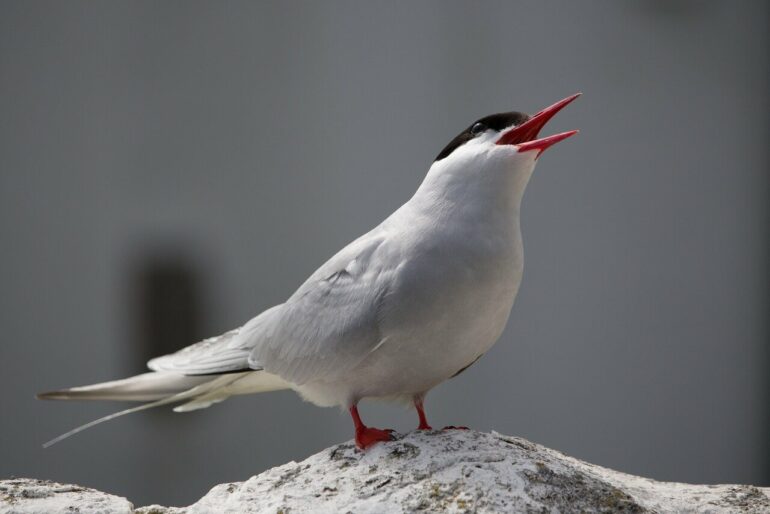Arctic terns—which fly on the longest migrations of any animal on Earth—may be able to navigate the dangers posed by climate change, new research suggests.
The birds live in near-perpetual daylight, breeding in the north of our planet and flying to Antarctica for the Southern Hemisphere summer, covering enough distance in their lifetime to travel to the moon three times.
A new study, led by the University of Exeter and the Met Office, has examined the likely impacts of climate change on arctic terns outside of the breeding season, investigating changes to prevailing winds, primary productivity (which affects food availability) at key sites visited by Arctic terns and Antarctic sea ice.
The paper, published in the journal Global Change Biology, is titled “Global warming and Arctic terns: estimating climate change impacts on the world’s longest migration.”
While poorer foraging in the North Atlantic seems likely to pose a threat for them in the future, the study concluded that the overall effects of climate change for migrating terns should be minor. They are likely to be resilient due to living their lives over such vast areas.
However, the researchers warn that multiple small effects may still harm this long-lived (up to 30 years) species—and other species may be unable to escape local and regional changes.
“Arctic terns rely on productive oceans for food, sea ice for rest and foraging, and prevailing winds during flight,” said Dr. Joanne Morten, from the University of Exeter.
“Although the Arctic tern is a species of ‘least concern’ globally on the IUCN Red List, breeding numbers are declining and can be challenging to monitor. Climate change is a massive threat to all seabirds. Our study looked at specific aspects of this. So, while our findings suggest this species may be resilient, this is only part of a bigger picture for Arctic terns and many other species. Meeting carbon emissions targets is vital to slow these projected end-of-century climatic changes and minimize extinction risk for all species.”
The study used observations of ongoing climate change and multiple climate and Earth System Models to project changes by 2100.
It examined the impacts of two emissions scenarios: “middle-of-the-road” and “fossil-fueled development.”
The latter led to a projected decline of primary productivity (the base level of all food chains) in the North Atlantic—a key feeding ground for millions of seabirds and other marine animals.
However, minimal changes to primary productivity were projected at three other key sites for Arctic terns: the Benguela Upwelling, the Subantarctic Indian Ocean and the Southern Ocean.
Meanwhile, the impact of likely Antarctic sea ice decline on terns is uncertain, and the projections suggested small changes to prevailing winds would have “minimal impacts” on tern migration—except in the Southern Ocean, where strengthening winds may force the birds to shift flight routes.
The study’s interdisciplinary approach began with a virtual Climate Data Challenge “hackathon” facilitated by the University of Bristol and the Met Office. This allowed ecologists to work with climate scientists, bringing together different skills and approaches. The research team included the universities of Liverpool, Bristol, Washington, Oxford and Iceland.
More information:
Global warming and Arctic terns: estimating climate change impacts on the world’s longest migration, Global Change Biology (2023). DOI: 10.1111/gcb.16891
Provided by
University of Exeter
Citation:
Arctic terns may navigate climate dangers (2023, July 26)



